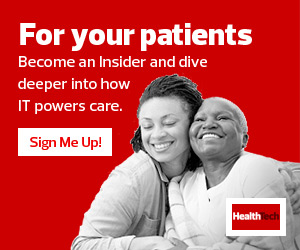What is HL7?
For more than 30 years, Health Level 7 has been a widely used data interchange standard that allows hospital information systems to communicate clinical and administrative data to one another.
In the early 2010s, amid the growing use of smartphones and the ubiquity of the internet, the Fast Healthcare Interoperability Resources, or FHIR, emerged as a promising new standard for interoperability in the industry.
“The real game changer of FHIR versus HL7 V2 is that universal applicability,” says Daniel Golder, principal at healthcare consulting firm Impact Advisors. “FHIR opens the door to mobile devices, apps and wearables. It allows the user, the app to leverage the information.”
Here’s more about these two key standards, how interoperability in healthcare has changed over the years and what the future looks like in context with federal guidance.
Healthcare Data Management Is Evolving from HL7 V2
Hospitals had a growing need to connect multiple systems. First released in the late 1980s, HL7 V2 has become one of the most broadly implemented standards for healthcare data worldwide, according to HL7 International. Some 95 percent of U.S. healthcare organizations use HL7 V2, and it’s used in more than 35 countries.
Over time, the existence of data outside of hospitals became harder to ignore. Payers, pharmacies and laboratories all had data, so the expectations and meaning of interoperability had to adapt. There was also an increasing amount of data being created, recorded and stored within healthcare systems.
READ MORE: Learn 3 important practices to comply with CMS’ data accessibility regulation.
“HL7 V2 still has its purposes; it has to really be predefined. It takes a lot more effort in a lot of ways to implement that information,” Golder says.
A major benefit of HL7 V2 was its widespread adoption, says Aaron Seib, senior vice president of strategy and innovation at the IT and data management company NewWave. Its longevity is certainly remarkable, and Seib expects the standard will still be used in certain scenarios.
“There was this different, arcane art that was unique to healthcare,” Seib says. “What we benefit from in the FHIR world is that we’ve adopted the technology stack that’s used for other use cases in other industries.”
What Is FHIR and What Does It Mean for Healthcare?
After the rise in app use and smartphone ownership in the early 2010s, healthcare IT leaders such as Grahame Grieve, the architect of FHIR and the FHIR product director at HL7, sought to rethink health information exchange in a more contemporary context.
The decades-old HL7 V2 had been created before widespread internet use. Version 3, which tried to address certain issues in its predecessor, had not been widely implemented because of its complexity.
FHIR drew from previous HL7 standards and combined them with current web service technologies, such as those that power e-commerce services.
Think of it like a travel website, as Dr. Russell Leftwich, senior clinical advisor of interoperability at software company InterSystems and adjunct assistant professor of biomedical informatics at Vanderbilt University, described in an online presentation.
LEARN MORE: Find out how interoperability increases efficiency and transparency in healthcare.
When people visit travel websites, they can see a list of flights from different airlines for a certain journey on a specified date. Those websites aren’t just downloading all the schedules; the airlines have agreed on how to represent the data for a flight, how to ask for it and what data a user gets back in return.
“FHIR is the same thing for healthcare,” Leftwich said in his presentation. “It is the same technology, and it is the agreement on the meaning of the data in healthcare. And of course, that’s where it gets a lot more complicated, because healthcare is more complex than air travel.”
The expansion of FHIR also signaled a wider pool of talent to recruit from, Seib says, such as RESTful API developers without hospital-specific backgrounds.
“We have a new technology stack that is not as unique as healthcare once was with V2 messages,” Seib adds. “The technologies that we’re using really lend themselves — it’s faster as an architect and an engineer to use the technology stack that we’re using.”
An Interoperable Future in Healthcare
Healthcare interoperability has made significant strides since the Health Information Technology for Economic and Clinical Health (HITECH) Act passed in 2009. Seven years later, with the 21st Century Cures Act, provisions targeting healthcare IT helped make the ONC a driver for greater interoperability, following up with the release of the final rule in 2020.
As the COVID-19 pandemic revealed the fissures in healthcare information sharing, interoperability has been a critical area of investment for providers.
Golder recommends healthcare organizations keep an eye on timelines for the Trusted Exchange Framework and Common Agreement, which he describes as an attempt to “establish a single ‘on-ramp’” for health information exchange. He adds that not enough stakeholders are paying attention to the October deadline for making all electronic health information available.
“Get to know the law, get to know your time frame for doing this and don’t put it off,” Golder says.
Organizations should also consider privacy and security risks as interoperability improves in healthcare, especially as patients navigate multiple apps and digital touchpoints.












